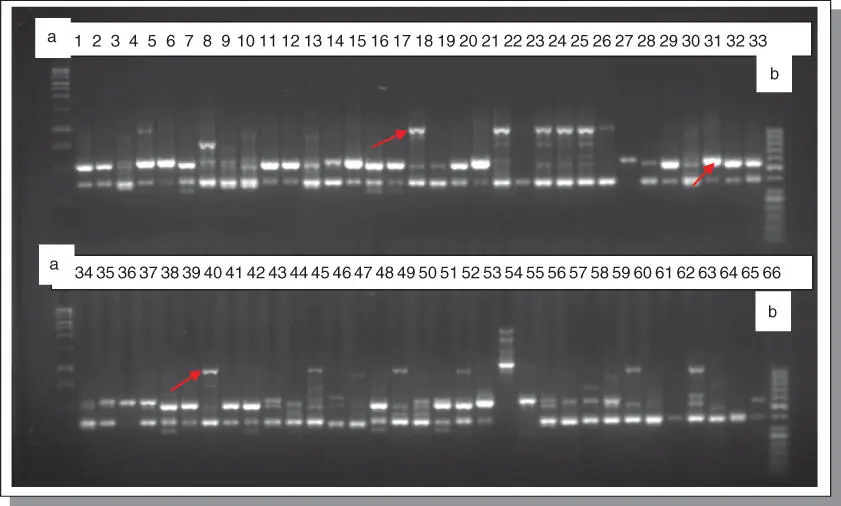
Figure B7.6 Amplification profile of 66 banana and plantain samples using Start codon targeted 26 (SCoT26) polymorphic marker: a = 1 kb step DNA ladder and b = 100 bp DNA ladder. Sample order (1–66 from left to right): 1 = Fougamou 1, 2 = Obino I'Ewai, 3 = Calcutta 4, 4 = Improved Lady Finger, 5 = Blue Torres Strait Island, 6 = Silk, 7 = Truncata, 8 = Cardaba, 9 = Lidi, 10 = Pelipita, 11 = Pelipita Manjoncho, 12 = Lai, 13 = Higa, 14 = Pisang Keling, 15 = Pisang Lawadin, 16 = Balonkawe, 17 = Gros Michel, 18 = Green Red, 19 = Plantain no.3, 20 = Pata, 21 = Chinese Cavendish, 22 = Dwarf Parfitt, 23 = Hochuchu, 24 = Umalag, 25 = Hsein Jen Chiao, 26 = Mons Mari (Pedwell), 27 = Lady Finger (Nelson), 28 = Pisang Rajah (South Johnstone), 29 = Tani, 30 = Pisang Lilin, 31 = Poteau Geant, 32 = Pisang Klutuk Wulung, 33 = Garbon 2, 34 = Zebrina (G.F), 35 = Khae (Phrae), 36 = Dole, 37 = Wompa, 38 = Pisang Palembang, 39 = Pisang Awak, 40 = Williams (Bell, South Johnstone), 41 = Plantain No.17, 42 = Kluai Tiparot, 43 = Tiau Lagada, 44 = Niyarma Yik, 45 = Selangor, 46 = Long Tavoy, 47 = Malaccenesis, 48 = Figure Pomme Geante, 49 = Highgate, 50 = Borneo, 51 = Honduras, 52 = Pome, 53 = Kunnan, 54 = Musa beccarii, 55 = Musa coccinea, 56 = JD Yangambi, 57 = Musa textilis , 58 = Tomolo, 59 = Pisang Berlin, 60 = FHIA‐23, 61 = No.110, 62 = Dwarf Cavendish, 63 = SH‐3436‐6, 64 = Lal Velchi, 65 = Madang, and 66 = FHIA‐21 (#68). Some unique banding patterns are shown by the red arrows in some of the accessions.
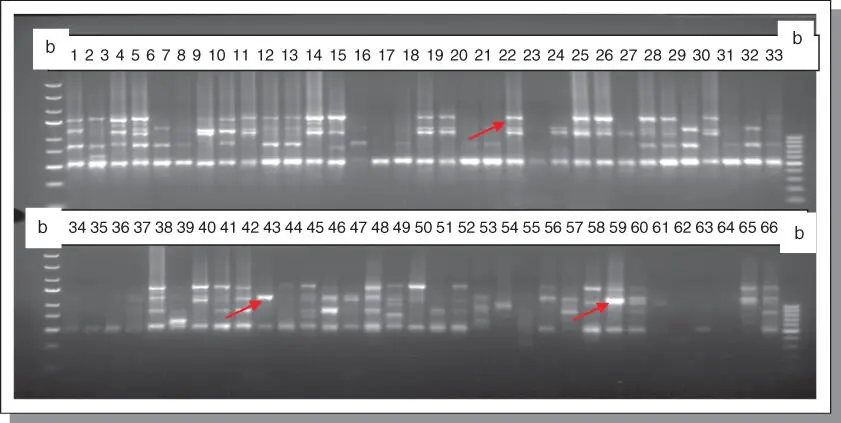
Figure B7.7Amplification profile of 66 banana and plantain samples using Inter‐simple sequence repeat 901 (UBC901) polymorphic marker: a = 1 kb step DNA ladder and b = 100 bp DNA ladder, Sample order (1–66 from left to right): 1 = Fougamou 1, 2 = Obino I'Ewai, 3 = Calcutta 4, 4 = Improved Lady Finger, 5 = Blue Torres Strait Island, 6 = Silk, 7 = Truncata, 8 = Cardaba, 9 = Lidi, 10 = Pelipita, 11 = Pelipita Manjoncho, 12 = Lai, 13 = Higa, 14 = Pisang Keling, 15 = Pisang Lawadin, 16 = Balonkawe, 17 = Gros Michel, 18 = Green Red, 19 = Plantain no.3, 20 = Pata, 21 = Chinese Cavendish, 22 = Dwarf Parfitt, 23 = Hochuchu, 24 = Umalag, 25 = Hsein Jen Chiao, 26 = Mons Mari (Pedwell), 27 = Lady Finger (Nelson), 28 = Pisang Rajah (South Johnstone), 29 = Tani, 30 = Pisang Lilin, 31 = Poteau Geant, 32 = Pisang Klutuk Wulung, 33 = Garbon 2, 34 = Zebrina (G.F), 35 = Khae (Phrae), 36 = Dole, 37 = Wompa, 38 = Pisang Palembang, 39 = Pisang Awak, 40 = Williams (Bell, South Johnstone), 41 = Plantain No.17, 42 = Kluai Tiparot, 43 = Tiau Lagada, 44 = Niyarma Yik, 45 = Selangor, 46 = Long Tavoy, 47 = Malaccenesis, 48 = Figure Pomme Geante, 49 = Highgate, 50 = Borneo, 51 = Honduras, 52 = Pome, 53 = Kunnan, 54 = Musa beccarii, 55 = Musa coccinea, 56 = JD Yangambi, 57 = Musa textilis , 58 = Tomolo, 59 = Pisang Berlin, 60 = FHIA‐23, 61 = No.110, 62 = Dwarf Cavendish, 63 = SH‐3436‐6, 64 = Lal Velchi, 65 = Madang and 66 = FHIA‐21 (#68). Some of the Musa accessions have similar allelic banding patterns, while some have allelic variants as demonstrated with arrows in the gel image of UBC 901 marker.
Macropropagation and micropropagation of Musa accessions
Within the Musaceae family, there are diploid, triploid, and tetraploid bananas and plantains that were derived from the combinations of parent plants M. acuminata (AA) and M. balbisiana (BB). Due to higher demands of these crops, it is necessary to establish a protocol for mass and rapid production of bananas and plantains to complement the traditional methods. Therefore, micropropagation and macropropagation techniques have become very important to adopt to produce faster, healthier, and stronger plants (Sadik et al. 2012).
Micropropagation of bananas and plantains involves the use of plant tissue culture techniques for rapid multiplication of stock plant material to produce a large number of progeny plants (Karule et al. 2015). It is used to mass produce plants with novel traits for germplasm conservation and for the improvement of the crops. Musa plantlets with traits of healthy growth, strength, shorter production cycle, and higher yields can be mass produced through micropropagation methods instead of conventional methods. Micropropagation will facilitate mass production and maintenance of Musa species with useful traits. Micropropagation through tissue culture techniques is an efficient method of producing large quantities and good quality Musa plants, but is constrained by high capital, skill requirements, and occurrence of somaclonal variations. Micropropagation of banana comprises several steps for preparation of tissue culture media: autoclaving media for sterilization; preparation and shaping of sucker; sterilization of shaped sucker; further shaping of sucker under the sterile laminar flow hood; and transferring of the shaped sucker into growth initiation media ( Figure B7.8) using a sterile environment ( Figure B7.9) to obtain meaningful results ( Figure B7.10).
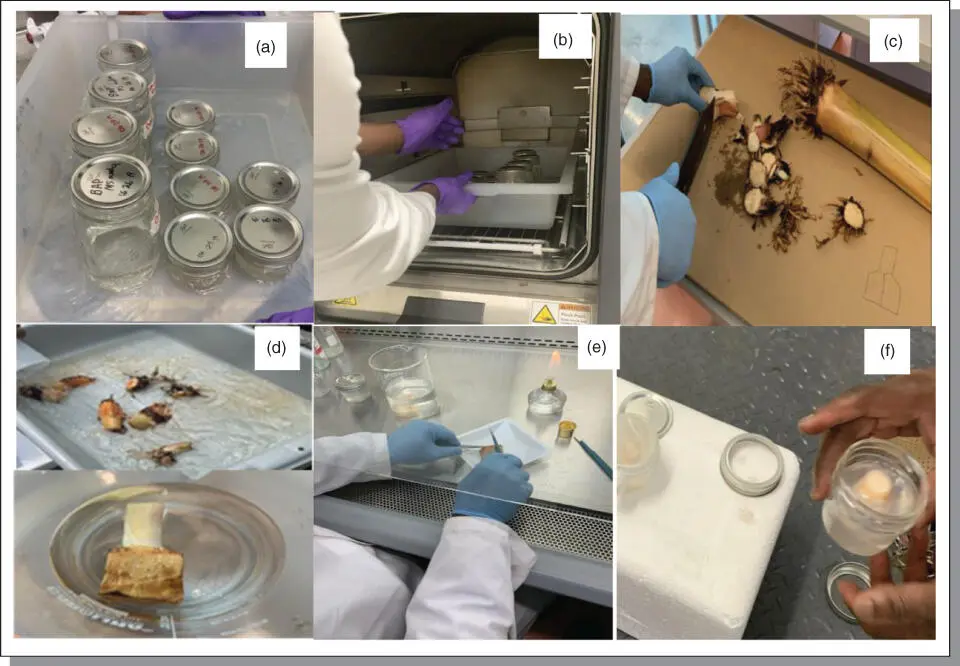
Figure B7.8Flow chart of micropropagation of banana. (a) = Preparation of tissue culture media; (b) = Autoclaving media for sterilization; (c) = Preparation and shaping of sucker; (d) = Sterilization of shaped sucker; (e) = Further shaping of sucker under the sterile laminar flow hood; and f = Transferring the shaped sucker into growth initiation media.
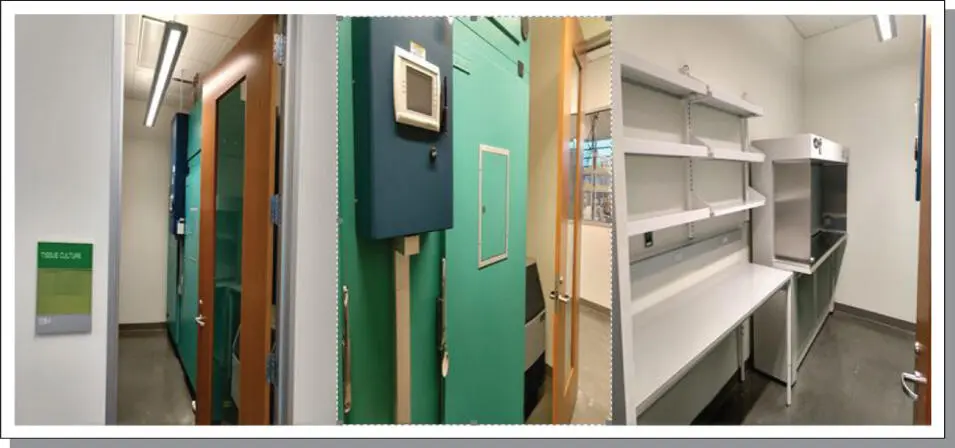
Figure B7.9Research laboratory for Musa tissue culture techniques at the Department of Natural Science, Bowie State University.
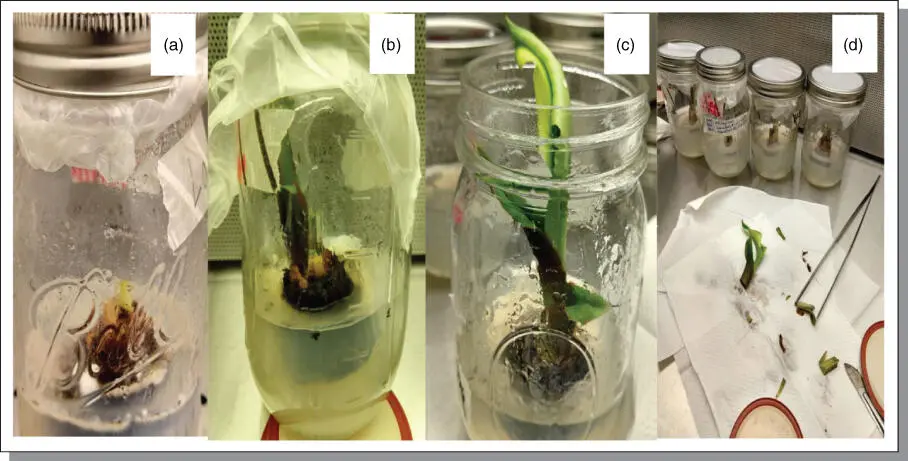
Figure B7.10Micropropagation experimental output from a plantain accession (Poteau Geant, PG, ABB). (a) = Growth rate of micropropagated PG after three weeks before first subculturing in new MS medium; (b) = growth rate of micropropagated PG after three weeks of first subculturing; (c) = growth rate of PG after three weeks of second subculturing; (d) = subculturing of PG from section c into four separate growth initiation MS media for independent development prior to transfer to rooting medium.
Macropropagation has been advocated for as an effective alternative method that requires less capital and skills to produce large numbers of better‐quality banana seedlings. Macropropagation units are made from local materials (branches and woven mats) with rice hulls, coffee husks, and sawdust as substrates. Depending on variety, one corm can yield an average of 10 plantlets. This technique has the potential to narrow the gap between demand and supply of affordable healthy banana seedlings. The techniques involve harvesting banana suckers from true‐to‐type mother plants; cutting and shaping the suckers; cross‐sectional cutting of the shaped suckers to induce growth initiation; sterilization of the suckers in a household bleaching reagent for disinfection; and transferring the treated suckers to a plastic pot that is half‐filled with treated soil followed by addition of sawdust, or using only sawdust to cover the suckers ( Figure B7.11). A plantain accession of Poteau Geant (ABB) was used to demonstrate the applicability of macropropagation as an alternative method of mass production of Musa species for maintenance of those with novel traits and germplasm conservation as obtained in less than three months in Figure B7.12.
Читать дальше

















